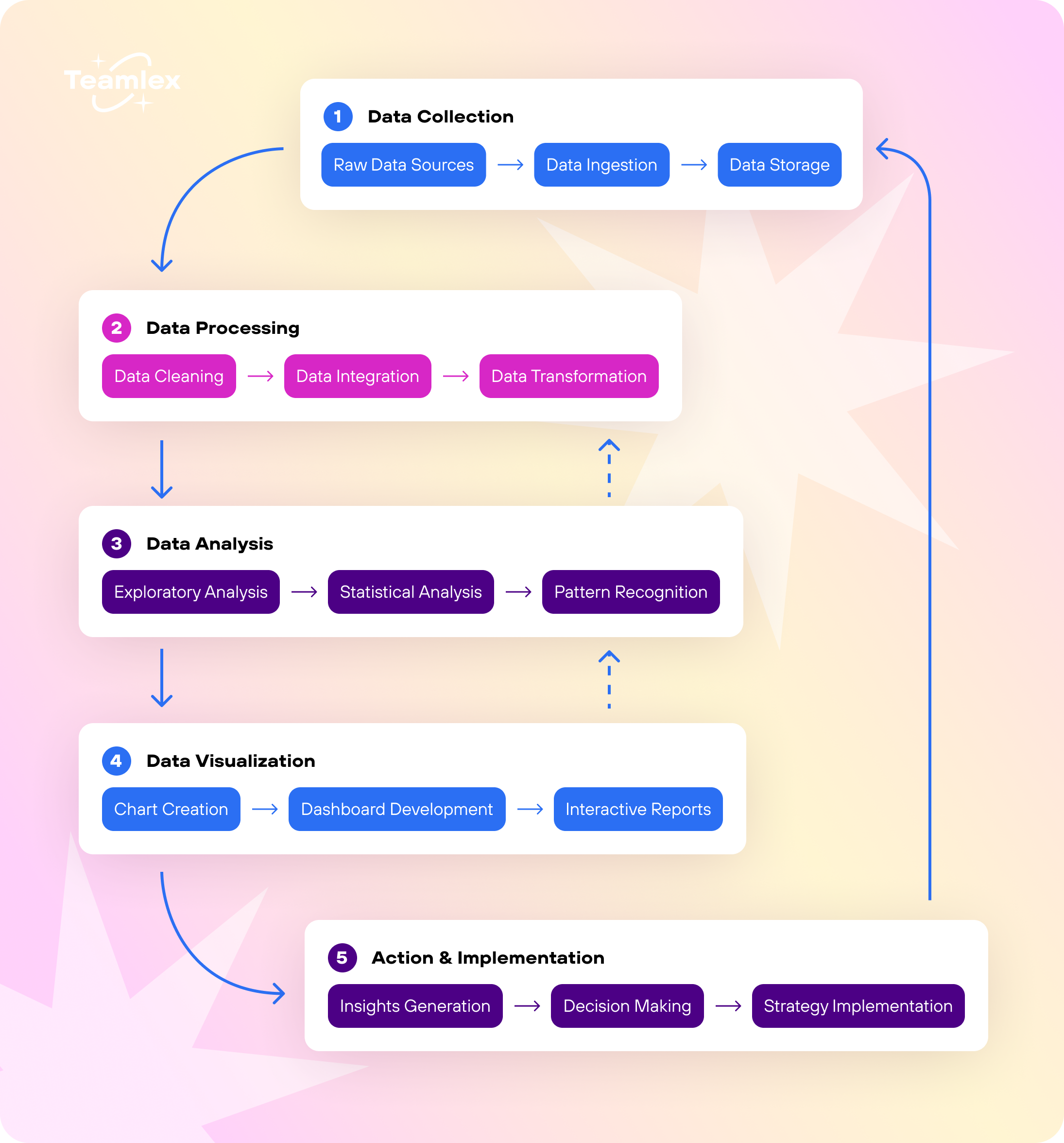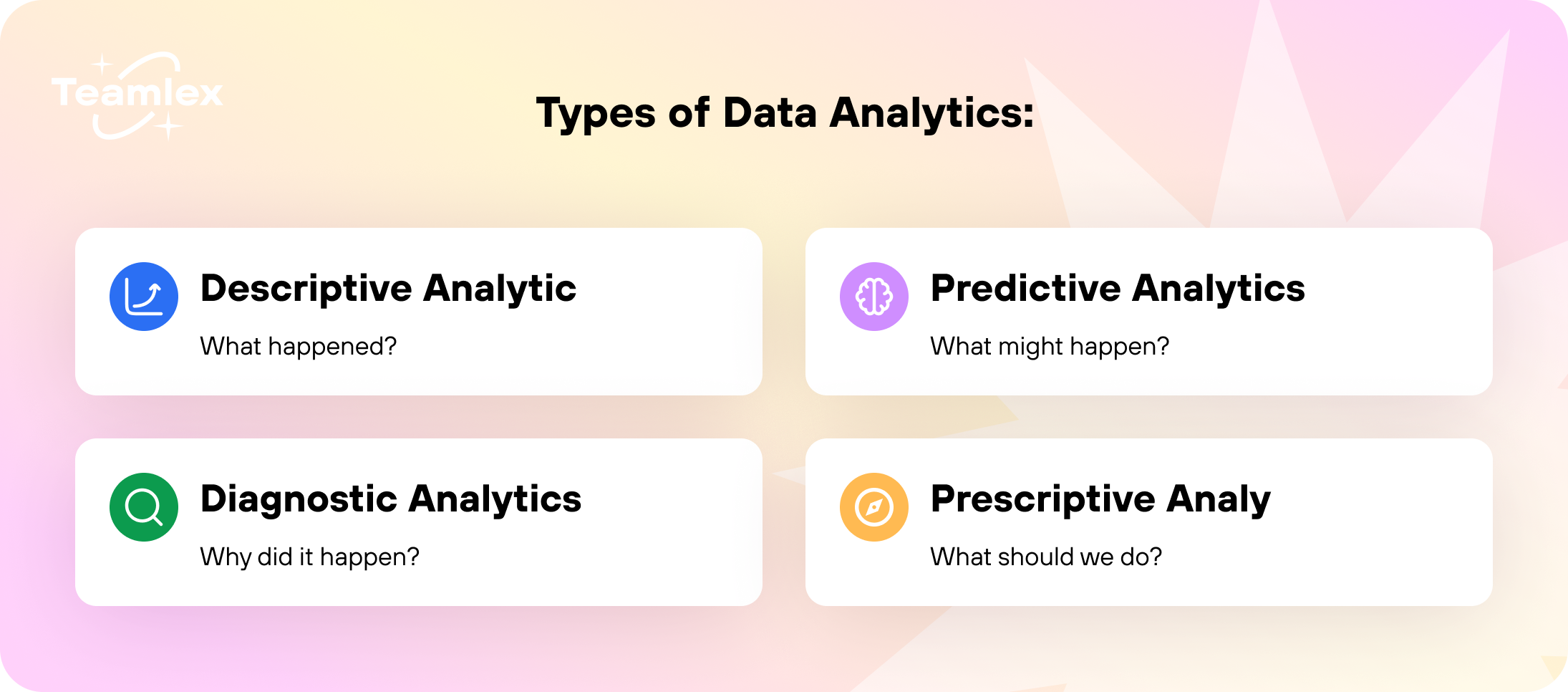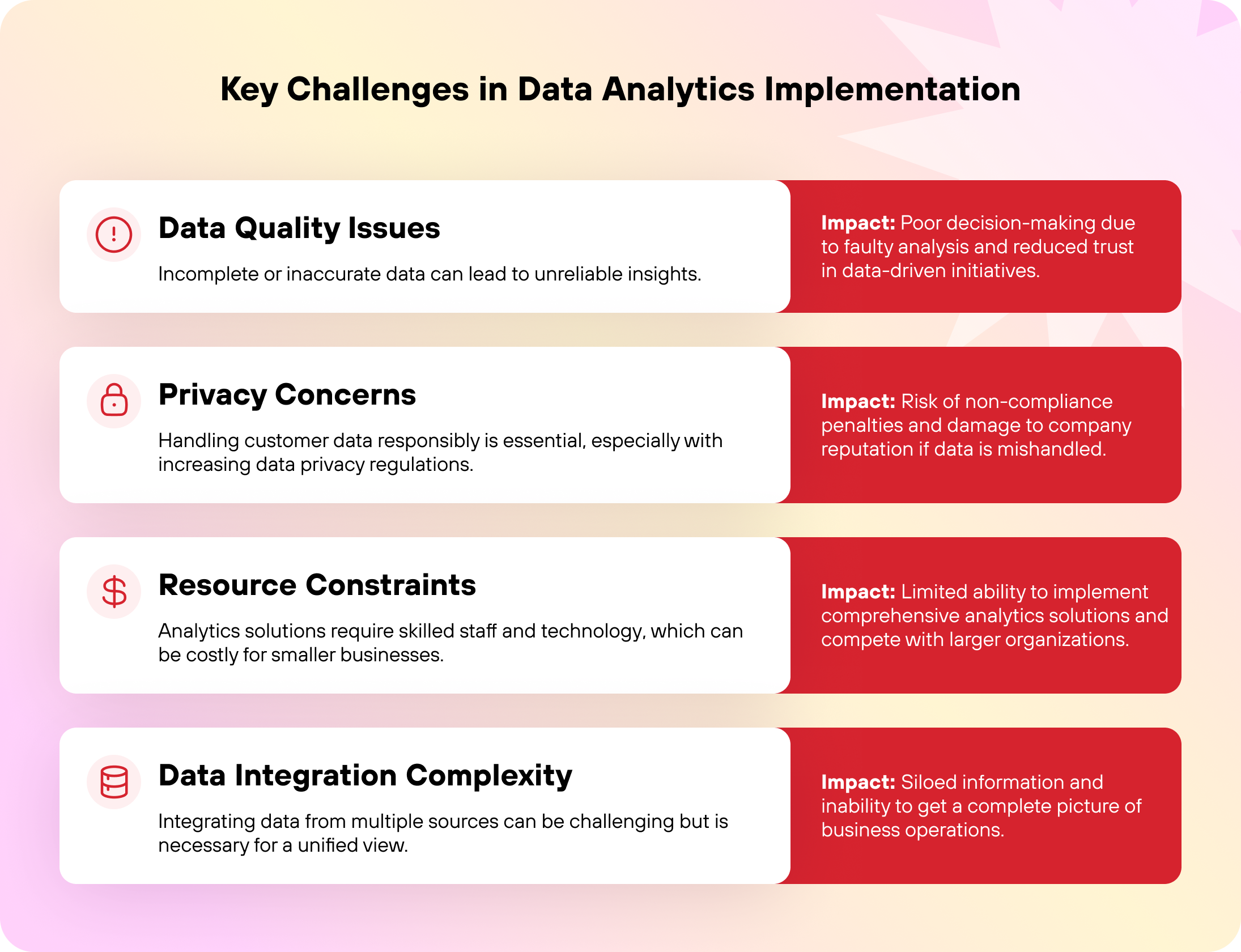In today’s competitive marketplace, data analytics has become a crucial tool for businesses looking to grow and succeed. Whether it’s better understanding customers, streamlining operations, or identifying new opportunities, data analytics helps companies make smarter, data-driven decisions that lead to growth. This article covers the key ways data analytics can boost business growth and why companies should embrace a data-centric approach.
What is data analytics?
Data analytics is the process of examining data to uncover valuable insights. These insights guide decisions across different areas of a business, from marketing and sales to operations and product development. With the right data and analysis, businesses can turn raw information into actionable strategies that support their growth goals.

Why data analytics matters for business growth
Data analytics helps companies in many ways, but here are the key reasons why it matters so much for growth:
- Informed decision-making: By analyzing data, companies can make better choices based on facts rather than assumptions.
- Cost efficiency: Analytics can highlight areas where resources are wasted, allowing companies to cut costs.
- Targeted marketing: Data helps businesses understand their customers, enabling more effective marketing efforts.
- Risk management: Predictive analytics can identify potential risks and help businesses prepare for them.
Key areas where data analytics drives growth
1. Customer insights and personalization
Today’s customers expect personalized experiences, and data analytics makes it possible to deliver them. By understanding customers on a deeper level, businesses can tailor their products, services, and marketing efforts.
- Customer segmentation: Data analytics helps businesses categorize customers into groups, making it easier to target specific needs.
- Personalized recommendations: Based on past behavior, companies can recommend products or services customers are likely to enjoy.
- Feedback analysis: Analyzing customer feedback, reviews, and complaints gives companies valuable insights into what they’re doing right and where they need to improve.
2. Operational efficiency
Beyond customer-facing benefits, data analytics plays a major role in optimizing internal processes. Improved efficiency not only saves time and money but also positions a business to scale.
- Supply chain optimization: Analytics can help companies identify bottlenecks in their supply chain, reduce waste, and optimize inventory.
- Resource allocation: Data insights guide where resources are best spent, helping to eliminate unnecessary costs.
- Process improvements: By analyzing operational data, businesses can identify inefficiencies and improve workflows.
3. Market and trend analysis
Staying ahead of trends is essential for growth, especially in fast-evolving industries. Data analytics enables companies to spot new trends early and act on them.
- Competitive analysis: Data analytics helps businesses study competitors’ performance, identify their strengths and weaknesses, and find market gaps.
- Demand forecasting: Predictive analytics can forecast customer demand, helping companies adjust production and marketing strategies.
- Identifying new markets: Analytics can reveal untapped markets or audience segments that offer opportunities for expansion.
4. Product development
Data analytics is crucial when it comes to creating products that meet customers’ needs. Insights from analytics guide product teams in building, improving, and launching products that have real value.

- Feature analysis: By studying how customers use different features, companies can focus on developing what customers value most.
- Market testing: Analytics can evaluate customer feedback during the beta phase, ensuring the product is ready for launch.
- Product performance tracking: Ongoing data collection helps companies track how a product is performing and make adjustments as needed.
5. Sales and revenue growth
Effective sales strategies rely heavily on understanding data. Analytics can help businesses optimize their sales funnels, refine pricing strategies, and identify ways to increase revenue.
- Sales funnel optimization: By analyzing customer journeys, companies can identify and address points where potential customers drop off.
- Pricing strategy: Analytics provides insights into market demand and customer behavior, helping companies set competitive prices.
- Customer retention: Identifying patterns in customer churn helps businesses retain customers, which is often more cost-effective than acquiring new ones.
{{resource}}
Types of data analytics that drive growth
To understand how data analytics contributes to growth, it’s useful to know the four main types of analytics businesses use:
- Descriptive analytics: Summarizes past data to show what has happened.
- Diagnostic analytics: Helps to understand why things happened by analyzing historical data.
- Predictive analytics: Uses machine learning to make forecasts based on past data, allowing companies to anticipate future outcomes.
- Prescriptive analytics: Recommends specific actions based on data insights, optimizing business outcomes.

Each type of analytics offers unique insights, and combining them provides a comprehensive picture of a business’s performance and potential.
Challenges in leveraging data analytics
While data analytics offers clear advantages, companies can face challenges when implementing it:
- Data quality issues: Incomplete or inaccurate data can lead to unreliable insights.
- Privacy concerns: Handling customer data responsibly is essential, especially with increasing data privacy regulations.
- Resource constraints: Analytics solutions require skilled staff and technology, which can be costly for smaller businesses.
- Data integration complexity: Integrating data from multiple sources can be challenging but is necessary for a unified view.

Best practices for successful data analytics
Implementing data analytics effectively requires planning and strategy. Here are some best practices for success:
- Define objectives: Clearly outline what you want to achieve, such as improving customer satisfaction or increasing efficiency.
- Focus on data quality: Clean and validate data regularly to ensure its accuracy.
- Use real-time data: Real-time data enables faster, more responsive decision-making, which is especially valuable in competitive markets.
- Prioritize data security: Protecting customer data not only complies with privacy laws but also builds customer trust.
- Create a data-driven culture: Encourage employees to rely on data for decision-making and provide them with training to enhance their skills.
How small and medium businesses can benefit from data analytics
Data analytics isn’t just for big corporations—small and medium-sized businesses (SMBs) can also benefit immensely from using data to drive growth.
- Affordable tools: Many affordable analytics tools make it possible for SMBs to access valuable insights.
- Targeted marketing: Data helps SMBs craft marketing strategies that reach the right customers, improving ROI.
- Operational efficiency: Even small improvements in efficiency can make a big impact on profit margins for smaller businesses.
Future trends in data analytics
As technology advances, data analytics is evolving to offer even more capabilities that can drive business growth.
- Artificial intelligence (AI) and machine learning: AI allows for deeper insights and more accurate predictions, enabling businesses to respond faster to market changes.
- Augmented analytics: Combining machine learning with human insights, augmented analytics automates the process of finding valuable data insights.
- Big data integration: Integrating large datasets from different sources will help businesses create a comprehensive view of their operations.
- Internet of Things (IoT) data: IoT devices generate valuable data that businesses can use to make real-time decisions.
{{cta}}
Conclusion
Data analytics has become a vital tool for businesses looking to grow. From better understanding customer needs to making operations more efficient, data-driven strategies enable companies to stay competitive, adapt to market changes, and expand. But achieving success with analytics requires attention to data quality, security, and fostering a culture that values data-driven decision-making.
For businesses of all sizes, embracing data analytics offers the chance to gain a competitive edge, optimize resources, and ultimately, drive growth.






















4